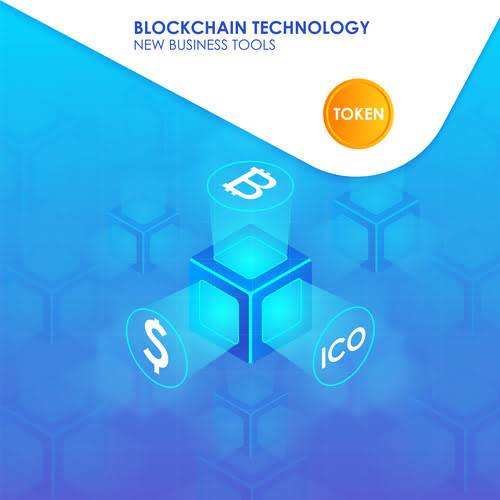
Description
Each time a developer publishes a commit to the source code repository, Jenkins triggers a build. The Pipeline also provides a set of tools that are useful for modeling simple as well as complex delivery pipelines ‘as code’ through ‘Pipeline Domain-Specific Language (DSL)’ syntax. At the time of what is Jenkins blog, it had close to 1500+ plugins contributed by the community.
- The Jenkins X project was formerly launched in 2018 with the goal of creating a modern, cloud native Jenkins.
- Therefore, a build is one run of a defined project with various steps.
- In a volatile and highly competitive business environment, the systems created to support, and drive operations are crucial.
- For C/C++, there are plugins to capture errors and warnings from the console, generate build scripts with CMake, run unit tests, and perform static code analysis.
- With its robust features, Jenkins enables seamless integration, continuous delivery, and efficient testing.
- The built-in node monitors the health of all attached nodes and takes them offline if any values go above a threshold.
Many of the individual syntactical components (or “steps”) written into a
Jenkinsfile, however, are common to both Declarative and Scripted Pipeline. Read more about how these two types of syntax differ in Pipeline concepts
and Pipeline syntax overview below. There are over a thousand different plugins that can be used to enhance the functionality of a Jenkins environment and suit the specific needs of an organization.
Getting Started with Jenkins and Running a Multi-Step Pipeline
Using these services, you may enhance Jenkins’ functionality and make it work with other programs. The Jenkins community already has more than 1600 plugins available for usage in a variety of scenarios. A node is a machine which is part of the Jenkins environment and is capable of
executing a Pipeline.
Though Hudson and Jenkins were being developed independently, Jenkins acquired significantly more projects & contributors than Hudson. Consequently, Hudson is no longer maintained by the community. MinnPost is an independent newsroom, covering all things Minnesota, including the upcoming election.
Jenkins
The Jenkins project was started in 2004 (originally called Hudson) by Kohsuke Kawaguchi, while he worked for Sun Microsystems. Kohsuke was a developer at Sun and got tired of incurring the wrath of his team every time his code broke the build. He created Jenkins as a way to perform continuous integration – that is, to test his code before he did an actual commit to the repository, to be sure all was well. Once his teammates saw what he was doing, they all wanted to use Jenkins.

Originally developed by Kohsuke for continuous integration (CI), today Jenkins orchestrates the entire software delivery pipeline – called continuous delivery. For some organizations automation extends even further, to continuous deployment. Continuous delivery (CD), coupled with a DevOps culture, dramatically accelerates the delivery of software.
Next-Gen App & Browser Testing Cloud
The automated testing phases embed into the CI pipeline in Jenkins seamlessly. Various plugins help run unit, integration, functional, and regression tests and store the results for later viewing and analysis. A continuous integration tool such as Jenkins helps test, identify, and address problems before applying changes to production. Checking a Jenkinsfile into a source control tool allows the whole team to edit, review, and adapt the steps in the delivery pipeline. Pipeline in Jenkins is a group of jobs (or events) that are interlinked in a particular sequence. Jenkins Pipeline is a set or suite of plugins that provides support for implementation and integration of Continuous Delivery pipelines into Jenkins.

Jenkins is widely used in automation due to its versatility and reliability. With its robust features, Jenkins enables seamless integration, continuous delivery, and efficient testing. Its extensive plugin ecosystem and strong community support make it an essential tool for achieving automation goals effectively. Plugins, extensibility, and online community are the core USPs of Jenkins.
Javadoc
Design patterns and Java Annotations for plugins are used to specify how the plugin is created, how it extends other plugins, and how its user interface appears in Jenkins. You may also consider enrolling for DevOps Online Training to upscale yourself. Jenkins can operate on Windows, macOS, many Unix distributions, and Linux. You can use the Oracle JRE or OpenJDK if you have a Java 8 virtual machine. A Jetty application server often hosts Jenkins as a Java servlet. Not only that, but you can also use the Apache Tomcat Java application server.
One node is the central control unit and organizer, known as the controller. Continuous integration is an essential aspect in environments with multiple developers. Each developer makes changes to restaurant app builder code, and each change has potential issues. A agent is a remote machine that is connected to the Master. Depending on the project and build requirements, you could opt for ‘N’ number of agents.
Smart TV Testing Cloud
For this reason, Jenkins is well understood, with a broad knowledge base, extensive documentation, and abundant community resources. These resources make it easier to install, manage and troubleshoot Jenkins installation. Jenkins takes the development steps from integration to deployment, automating every step of the way.

Continuous Integration helps developers find bugs or errors in software builds at early stages, which, in turn, reduces the cost of fixing them at later phases. A Pipeline’s code defines
your entire build process, which typically includes stages for building an
application, testing it and then delivering it. That lets you run multiple builds, tests, and product environment across the entire architecture. Jenkins Slaves can be running different build versions of the code for different operating systems and the server Master controls how each of the builds operates.
What is DevOps – A Beginners Guide To DevOps
One is build integration, which can include a service hook to trigger Jenkins on every commit to your GitHub repository. The second is the use of GitHub authentication to control access to Jenkins via OAuth. When you run Jenkins for the first time, it creates an administrative user with a long random password, which you can paste into its initial web page to unlock the installation.
How To Setup Master & Agent(s) In Jenkins?
It can also execute builds, although it isn’t as scalable as Jenkins agents. Jenkins automation is commonly triggered by code changes in repositories like GitHub, Bitbucket, and GitLab, and integrates with build tools like Maven and Gradle. As is the case with most software, there are pros and cons to Jenkins. One of the advantages of Jenkins is that it can be extended using plugins. Plugins also contribute to the flexibility of Jenkins, as does the rich scripting and declarative languages that allow for highly custom pipelines. Since Jenkins is highly unopinionated, it fits well into most environments, including complex hybrid and multi-cloud systems.
Blog
Since one of the goals of microservices is to frequently update applications and services, the ability to do so cannot be bounded by release bandwidth. More and smaller services with faster update intervals can only be achieved by the type of automation Jenkins provides. There are also tutorials geared to developers who want to
orchestrate and automate building their project in Jenkins using Pipeline and
Blue Ocean.

